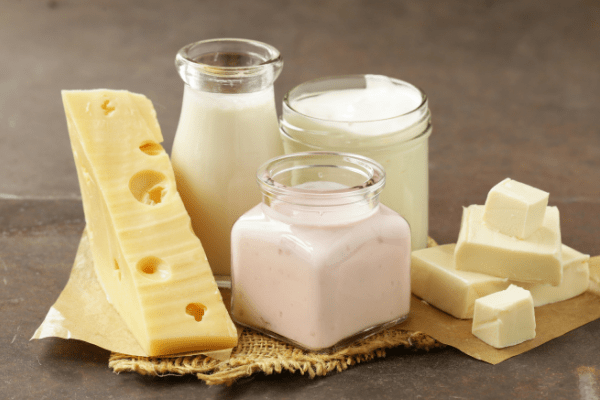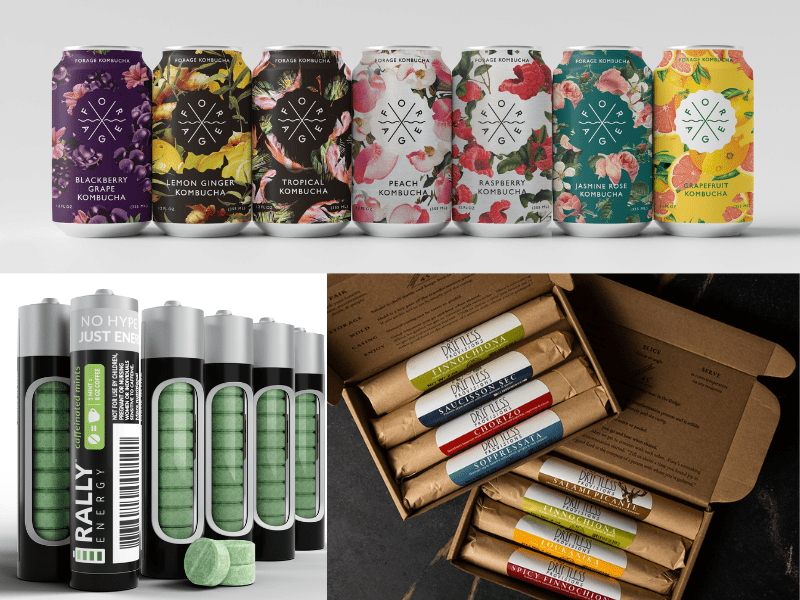For farmers looking to diversify their income and boost total revenue, value-adding can be a great way to go. At its core, value-added agriculture means transforming a raw commodity into something new and of greater value. A dairy farm could turn its milk into cheese and yogurt, for instance, and sell them through local grocery stores. An organic grain grower might mill their wheat into flour for bakeries, or launch a line of baked goods.
Value-adding can even extend beyond physical products. For example, a farm might open its own retail store, host farm-to-table dinners, offer educational tours or create a wedding venue. Any of these opportunities can provide immense value to consumers, increase a farm’s notoriety and generate additional income for the farm business.
Because value-added ventures cost money, USDA allocates millions of dollars each year ($33 million in 2021!) to value-added producer grants. VAPGs provide working capital for processing, packaging, labeling, ingredients, marketing, advertising, labor and inventory, or they can pay for a consultant to help develop a value-added business.
But even with financial support, value-added projects can be challenging to get right. They often take on different business models than traditional farms have—and require entirely different skill sets. That said, most farmers are gritty, innovative and undaunted by challenge. FFI has helped several farm entrepreneurs distill their ideas, make solid business plans and build thriving value-added enterprises.
Bree Breckel and Eric Weninger of B&E’s Trees are a great example. The Wisconsin maple farmers launched their first value-added product, Bourbon Barrel Aged Maple Syrup, in 2013. Then last year they applied their learnings—and a VAPG—to creating Embark Maple, a new consumer brand and product line. Bree and Eric share their inspiring value-added journey on the latest Edible-Alpha podcast.
Although each farmer and farm are unique, and the potential opportunities vary, here are a few helpful hints for any ag entrepreneur exploring value-added.
1. Know the work you love, and value-add around it. As Bree points out in the podcast, different value-added projects befit different abilities, personalities and workloads. For example, some farmers delight in hosting visitors while others prefer less social interaction. Some enjoy the process of getting products on shelf; others would consider that a headache. Focus on the kind of work you love, whatever brings you fulfillment, and craft your value-added strategy around that.
2. Understand your strengths and when to solicit help. Value-adding may involve market research, product development, brand building, manufacturing, marketing, sales and more—and few farmers will master each function. Know which tasks you’re good at, which you can assist with but not spearhead, and which are best to outsource or bring in assistance to accomplish.
3. Get grant-writing assistance. One area where many farmers could use help is in preparing a VAPG application. Because the process is technical, a professional grant writer can ensure that applications are complete and compelling, giving farmers the best shot at scoring funds.
4. Leverage relationships. Farmers generally have broad networks: neighboring farmers, distributors, retail partners, restaurants, consultants. Whether exploring, launching or scaling a value-added business, tap into existing connections and strengthen those relationships, which may open up unexpected avenues.
5. Understand it’s a separate business. Bree notes that value-adding is not simply a way to increase profitability on a farm—it’s an entirely new business, with a different business model and a different time scale. Yes, it should work synergistically with the main farm business, but it’s often best viewed and managed as a separate-but-related entity.
6. Remain flexible to adapt and evolve. Though value-adding demands a focused strategy, don’t be so rigid that you can’t adapt. As conditions, plans and expectations change, keep evolving the business plan and financial model. Take it from Eric: “Our ability to pivot both big and small has been critical in us surviving and getting to where we are now.”
7. Get ready for VAPG grants. Interested in value-adding but have a million questions? Check out our Value-Added Producer Grant webinars and resources here and add yourself to our contact list to learn more about upcoming programming and training opportunities for farm entrepreneurs.

Wisconsin maple farmers Bree Breckel and Eric Weninger have built a burgeoning value-added business, first with their maple syrup and now with new consumer brand Embark Maple. The B&E’s Trees founders chat with Brad about their original dreams, how their business plan has evolved, and how they’ve added resilience and diversity to their supply chain and overall business.
And now, our roundup of the best food and beverage finance news, events and resources from around the web…
Business Model Insights
- CPGs think inside the subscription box for product testing (Food Dive)
The subscription economy is expected to hit $1.5 trillion by 2025, more than double its level in 2020, putting it among the fastest-growing industries globally. - How to get prepared for the post-pandemic consumer (Food Dive)
- A Compass for Just and Regenerative Business: 5 Principles of the Leadership We Need (Sustainable Brands)
Raising Capital
- You can’t save the world if you can’t sustain your business (The Intertwine Group)
When pitching to investors, mission-driven food brands are usually full of passion—which is great, but it often conflicts with building a business that makes money. - 6 things to keep in mind when seeking investment in 2022 (New Hope Network)
- How two cooperatives and a $50 million investment fund bring innovations to farmers (Successful Farming)
CPG/National Brands
- Food sector caught in FTC supply chain probe (Food & Beverage Insider)
Nine consumer goods suppliers, retailers and wholesalers, including food industry giants, must hand over supply chain–related information to FTC, which aims to determine the causes and impacts of recent disruption. - Now Hiring: CPG industry is slowly adding jobs, but not enough – how can firms recruit, maintain top talent? (FoodNavigator-USA)
- CPG Demand Tops March 2020 Levels (Winsight Grocery Business)

Market Trends
- NielsenIQ: Necessity will be the strongest consumer driving force of 2022 (Supermarket News)
Today’s consumers, with a heightened state of needs and challenges, are pausing at the point of purchase to ask themselves, “do I need this?” - Health and Indulgence Both Winning in Dairy (Winsight Grocery Business)
- Flavor research: Kerry pegs BBQ as the world’s “top taste” of 2021 (Food Ingredients First)

Farming and AgTech
- How One Company is Unlocking the Potential for Agroforestry in the U.S. (Raising Regenerative)
With a unique tech-based approach to addressing the key barriers to expanding agroforestry in the U.S., Propagate Ventures has been quickly gaining momentum. - Researchers evaluate and identify consistent indicators to support sustainability on US ranches (The Cattle Site)
- Highest U.S. farm income in eight years, but headwinds in 2022 (Successful Farming)
Deals/M&A
- Egg Farmers Buy Willamette Egg Farms from Michael Foods/Post (Food Processing)
The acquisition by Northwest Farms, a new company that includes several egg-farming families, reflects increasing demand for cage-free eggs and humane animal treatment. - Justice Department sues to block big sugar merger, warning of price hikes and supply chain strains (CNBC)
- Analysis: Food Industry M&A Activity Shows No Signs of Slowing (The Food Institute)

Industry Events
Virtual events:
- Minnesota Organic Conference: 1/6–1/7
- National Farmers Union Virtual Women’s Conference: 1/10–1/13
- Food Finance Institute January 2022 Trends Talk: 1/24
- Organic Vegetable Production Conference: 2/3–2/8
- Organic Seed Growers Conference: 2/4–2/11
- Illinois Specialty Crop Conference & Trade Show: 2/5–2/7
- Ohio Ecological Food and Farm Conference: 2/12
In-person events:
- Michigan Organic Food and Farm Alliance Organic Intensives: 1/8 in East Lansing, MI
- Peanut and Tree Nut Processors Association Annual Convention: 1/14–1/17 in Miami, FL
- National Farmers Union Women’s Conference: 1/16–1/18 in Nashville, TN
- EcoFarm Conference: 1/20–1/22 in Pacific Grove, CA
- GrassWorks Grazing Conference: 1/20–1/22 in Wisconsin Dells, WI
- Practical Farmers of Iowa Annual Conference: 1/20–1/22 in Ames, IA
- U.S. Private Label Trade Show: 1/30–2/1 in Chicago, IL
- Food Northwest Process & Packaging Expo 2022: 2/3–2/4 in Portland, OR
- Illinois Specialty Crop Conference & Trade Show: 2/5–2/7 in Springfield, IL
- Winter Fancy Food Show: 2/6–2/8 in Las Vegas, NV





